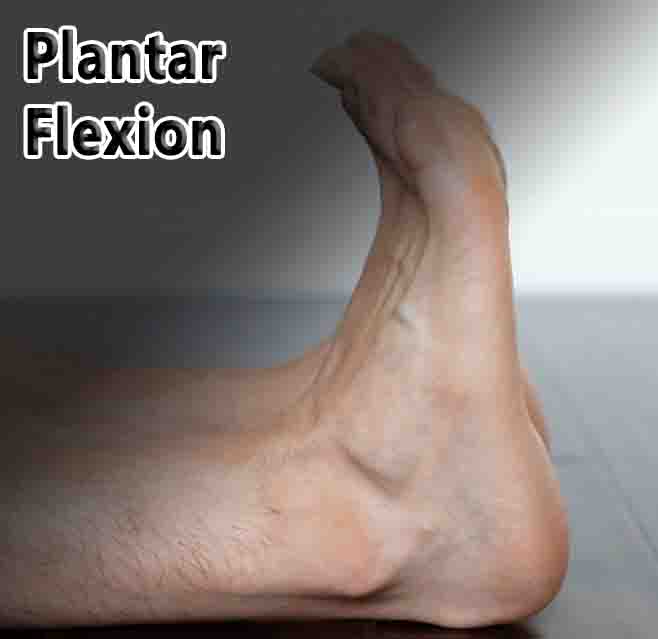Definition
‘Plantarflexion’ refers to the downward movement of the top of the foot away from the leg. A plantar flexion is, for example, pointing your feet and standing on the tips of your toes. Runners, cyclists, and walkers also use plantar flexion to a lesser extent.
The range of plantar flexion motion is usually between 20 and 50 degrees. Ballet dancers who dance en pointe, however, have an extreme range of plantar flexion motion that is 135% greater than the normal range.
Injuries and pain in the ankle are associated with excessive plantar flexion. However, there are exercises that can be performed to strengthen the muscles and alleviate the pain caused by this movement.
Anatomy of the Plantar Flexion Muscles
Several muscles in the ankle, foot, and leg control plantar flexion. Stretching the foot forward requires coordination between these muscles.
Triceps Surae
There are two major muscles in the calf, the triceps surae and the latissimus dorsi. Located in the heel bone, these muscles are gastrocnemius and soleus. Achilles tendon is formed when these two tendons unite at the bottom of the calf.
Plantar flexion is caused by the contraction of the triceps surae. This movement is primarily carried out by the gastrocnemius, out of all the muscles involved. In addition to pushing away from the ground, the soleus muscle is crucial for plantar flexion.
Plantaris Muscle
In addition to its short belly, the plantaris muscle has a long, thin tendon that extends behind the knee and down the calf. It connects directly with the heel bone at the bottom of the calf. By working with the gastrocnemius and soleus, it facilitates plantar flexion.
Around 10% of individuals do not have it in either or both of their legs, and it is often considered vestigial.
Flexor Muscles
There are two flexor muscles: the flexor hallucis longus and the flexor digitorum longus. Flexion of the big toe joints is performed by the flexor hallucis longus, while that of the rest of the toe joints is performed by the flexor digitorum longus. In plantar flexion, both of these actions play a crucial role.
Tibialis Posterior Muscle
Ankle plantar flexion is assisted by the tibialis posterior muscle located deep within the lower leg. Additionally, it is important for stabilizing ankles and legs in general.
Peroneus Muscles
There are three separate muscles that make up the peroneus muscles (also known as the fibularis muscles). The peroneus longus (also called the fibularis longus), the peroneus brevis (also called the fibularis brevis), and the peroneus tertius (also called the fibularis tertius) are these muscles.
Peroneus longus and brevis assist in plantar flexion. As opposed to the peroneus tertius, the peroneus tertius facilitates dorsiflexion (backward bending of the foot).
Plantar Flexion vs Dorsiflexion
It refers to the sole of the foot, which comes from the Latin word planta. A flexion is a movement that decreases the angle between two body parts, derived from the Latin word ‘flectere,’ which means to bend.
Dorsiflexion, sometimes called ‘dorsiflexion,’ is the opposite movement to plantar flexion. The toe is stretched back closer to the leg in dorsiflexion. Stretching the ankle and contracting the shin is required.
Plantar Flexion-Associated Pain and Injury
A foot injury usually causes problems with plantar flexion or pain when performing the movement.
On the other hand, frequent plantar flexion can also lead to ankle problems, such as posterior ankle impingement syndrome. In ballet dancers, jumpers, and soccer players, this is commonly referred to as ‘dancer’s heel. Often, it requires surgery to correct, causing pain while plantar flexion occurs.
Os trigonum syndrome is another injury associated with excessive plantar flexion. It is an accessory bone that sometimes develops behind the ankle, but not everyone has it. With repeated plantar flexions, the ankle and heel bones can come together and crush the os trigonum. Due to this, the tendons and ligaments pull and detach from the bone, causing significant pain, especially when the foot is in plantar flexion.
Plantar Flexion Contracture
Plantar flexion contracture occurs when the plantar flexion muscles are contracted, reducing the ankle’s range of motion. As a result, walking and other activities that require ankle movement become difficult.
Frequently occurring in cerebral palsy patients as a result of damage to the central nervous system or as the result of disease, contractures are especially movement-limiting.
Exercises and Prevention
You can do various exercises to prevent plantar flexion problems or ease contracture. Behavioral changes include limiting daily movement and adjusting your gait so that you don’t walk on your tiptoes. Instead, you should distribute your weight evenly across your entire foot. The heel of your shoe can be forced into an elevated position by using shoe inserts that act as wedges.
Plantar flexion contracture can also be overcome by stretching exercises that encourage dorsiflexion. For best results, you should perform these stretches for at least thirty minutes a day.

